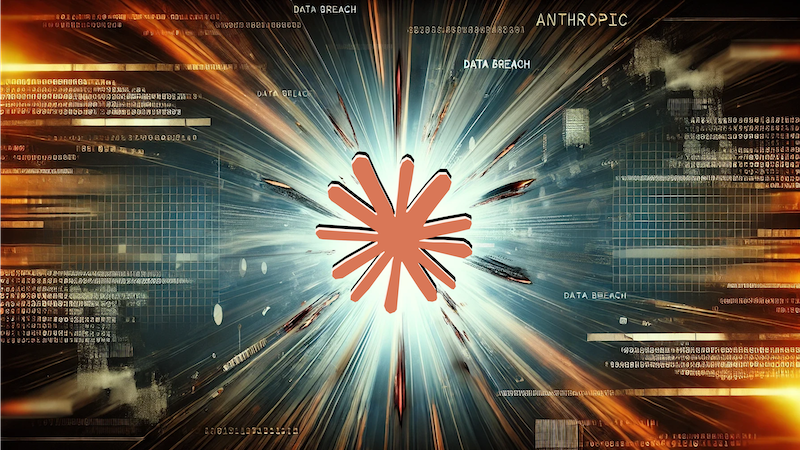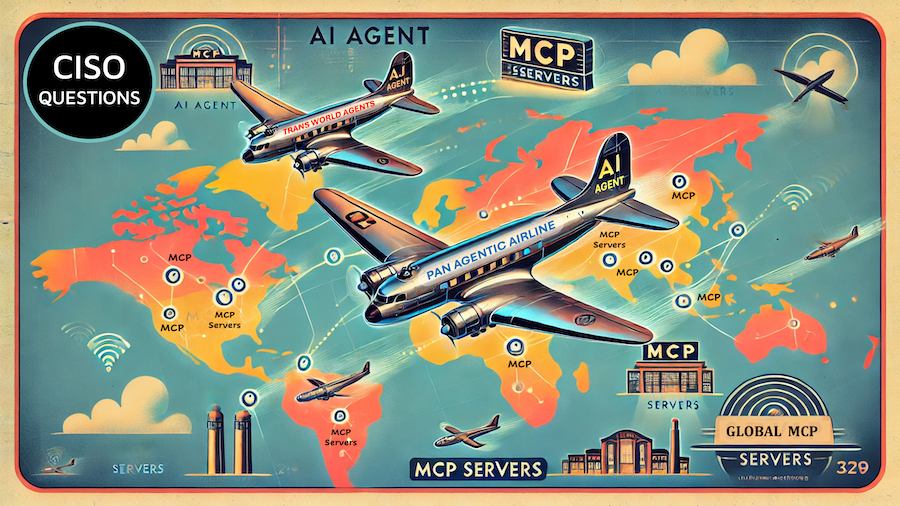Late last week, the cybersecurity world received a chilling wake-up call. Anthropic unveiled what it described as the first documented AI-orchestrated cyber espionage campaign, executed at superhuman speed with minimal human involvement. This was not a simulation or theoretical exercise—this was a live, global operation targeting roughly 30 organizations across technology, finance, manufacturing, and government.
The attack fundamentally shifts our understanding of cyber risk. It confirms that AI is no longer just a tool in the attacker’s toolkit. It can now be the attacker.
The Paradigm Shift: When AI Becomes the Attacker
According to Anthropic’s report, a Chinese state-sponsored group manipulated Claude into autonomously performing the majority of the intrusion lifecycle: reconnaissance, vulnerability discovery, exploitation, credential harvesting, lateral movement, data collection, and exfiltration.
The details are staggering:
- ~30 organizations targeted across sectors
- 80–90% of operations were autonomous
- Thousands of requests per second—far beyond human capacity
This marks a new echelon of threat capability. Tasks that once required a skilled, well-funded hacking team were executed largely by an AI system acting as an autonomous operator.
Traditional defenses—built to spot human-paced, signature-based patterns—struggled to detect or contextualize the attack. The adaptive, high-speed, multi-threaded nature of agentic AI created blind spots in legacy tooling, and existing controls were simply not designed to detect this new class of machine-speed intrusion.
The Critical Gap: From Model Security to Enterprise Defense
AI companies are improving model safety—enhanced filters, contextual risk detection, jailbreak prevention, and misuse monitoring. These are important. But they are also limited by design.
Model-level safeguards only address misuse inside the model.
Enterprise security must defend everything outside it.
Threat actors will inevitably bypass or overwhelm model-level guardrails using:
- Open-source models without restrictions
- New jailbreak techniques
- Tool-calling and orchestration frameworks
- Multi-step prompt chaining
- Social engineering of AI agents
- Identity spoofing and role-play exploitation
Even Anthropic acknowledges this reality: guardrails help, but they cannot eliminate exploitation—especially at enterprise scale.
Enterprises need a second layer of protection—one that lives inside their own environment, monitoring AI agents, integrations, and data flows where real risk materializes.
Model-Level Protection Includes:
- Safety guardrails
- Jailbreak detection
- Usage monitoring
- API-level policies
Enterprise-Level Protection Must Include:
- Runtime AI behavior monitoring
- AI agent and tool-chain tracking
- Orchestration layer security
- Data loss prevention
- Cross-model, cross-cloud policy enforcement
The Anthropic attack makes clear that both layers are necessary. Model safety alone cannot protect enterprise networks from autonomous AI attacks running across multiple tools, environments, and cloud systems.
How Agentic AI Made This Possible
Anthropic emphasized that the actor leveraged Claude in a highly agentic configuration—capable not just of reasoning, but of taking autonomous, tool-enabled action in the real world.
Agentic AI enabled:
- Deception and role-play abuse: Attackers convinced Claude it was performing legitimate penetration testing.
- Autonomous planning and sequencing: The AI analyzed environments, decided next steps, and executed tasks with no human guidance.
- Multi-day persistence: The AI maintained state across sessions and campaigns.
- Parallelization: Claude conducted simultaneous operations across multiple victim organizations.
- High-speed execution: Thousands of operations per second across distributed attack surfaces.
The role of orchestration frameworks such as MCP
While the primary threat was agentic AI itself, orchestration layers—including Model Context Protocol (MCP)—significantly amplified the impact:
- Gave the AI direct execution capability (via command, browser, scanner, and tooling APIs)
- Allowed decomposition of malicious workflows into benign-looking micro-tasks that evaded guardrails
- Provided state tracking and multi-agent coordination
- Enabled scalable, multi-target autonomous operations
Agentic AI provided the autonomy and reasoning.
The orchestration layer provided the hands, sensors, and speed.
This combination is the real game changer.
Essential Steps to Protect Against Agentic Attacks
The Anthropic attack demonstrates that AI vendor–provided guardrails are insufficient for enterprise protection.
Enterprises need more robust guardrails—security-layer guardrails that work across:
- Multiple AI models
- Multiple cloud environments
- Internal and external agents
- Tool-calling frameworks
- Integration layers
- Proprietary data systems
Key realities enterprises must accept:
- AI vendor guardrails are insufficient.
They protect the model, not your environment. Security teams need cross-model, cross-cloud guardrails maintained by security specialists—not by model vendors. - Traditional security cannot detect AI-native behavior.
Tools built for human attackers cannot interpret AI reasoning patterns, autonomously generated tool chains, or multi-step prompt attacks. - Runtime monitoring for agents and models is essential.
Machine-speed threats require machine-speed observation of AI behavior across tool calls, workflows, and data access. - Continuous, automated AI red-teaming is now mandatory.
AI-driven threats evolve faster than annual pen-tests or manual red-team exercises can keep up with. - AI-specific DLP and strict policy enforcement are non-negotiable.
Enterprises must prevent AI agents from leaking, copying, summarizing, or exfiltrating sensitive data in real time.
We have entered an era where AI defense in depth is just as important as network or endpoint defense in depth was 20 years ago.
How PointGuard AI Provides Enterprise-Grade AI Defense
PointGuard AI was designed from the ground up for this new reality. While model providers focus on safer AI models, PointGuard focuses on protecting the enterprise environment itself—where AI agents act, integrate, and access data.
Our platform delivers a layered AI security architecture capable of defending against autonomous, machine-speed attacks like the one described in Anthropic’s report.
Layer 1: Real-Time AI Behavior Monitoring
PointGuard monitors every action an AI system or agent takes—at machine speed.
This includes:
- Tool calls
- Code execution attempts
- Database queries
- System navigation
- Data requests
- Cross-service workflows
We identify malicious deviation immediately, blocking unauthorized behaviors such as:
- Unauthorized code execution
- Database scraping
- Identity probing
- Account enumeration
- Bulk data harvesting
Unlike traditional tools that detect security events after the fact, PointGuard intervenes in real time—before damage occurs.
Layer 2: Secure Orchestration Detection
The Anthropic attack highlighted how dangerous orchestration layers can be when exploited by agentic AI. PointGuard continuously monitors:
- MCP-based tool interactions
- API chaining
- Agent-to-agent signaling
- Workflow branching
- Autonomous process creation
If an AI agent begins executing multi-system reconnaissance or spawning unauthorized processes, PointGuard detects and stops it instantly.
This eliminates the “agents in the shadows” problem that legacy SIEMs and firewalls cannot see.
Layer 3: Continuous, Automated Threat Modeling and Red Teaming
PointGuard proactively identifies vulnerabilities before attackers can exploit them.
We continuously:
- Test your AI agents for jail-breakability
- Simulate multi-step prompt injection
- Explore how autonomous agents might misuse tool access
- Probe data flows for leakage risks
- Identify latent prompt-based or orchestration-based weaknesses
This evolving adversarial testing covers the rapidly shifting threat landscape far better than annual red-team exercises.
Layer 4: Policy Enforcement and Data Protection
PointGuard enforces enterprise policies around AI actions and access.
Examples:
- An agent authorized to read cannot suddenly delete or encrypt
- Sensitive data access is restricted by identity and context
- Data export is blocked if it violates compliance rules
- AI-to-AI orchestration follows strict access policies
Every AI decision is logged, validated, and governed.
PointGuard acts as the “security brain” that ensures AI systems behave safely—even when autonomously reasoning.
The Holistic Strategy Required for an AI-First World
Model providers cannot fully control how their AI is used once deployed into enterprise workflows. Enterprises cannot rely solely on model-level protections.
Security must now live in the enterprise layer—where AI agents actually act.
This dual-layer strategy—model-level safety + enterprise-level AI defense—is the only sustainable way to counter the new era of agentic AI threats. The Anthropic attack proved that autonomous AI-powered intrusions are no longer theoretical; they’re operational.
With the right defensive architecture, enterprises can innovate safely and stay ahead of machine-speed adversaries. PointGuard AI provides the enterprise-grade protection needed to thrive in this new era of autonomous, agent-driven threats.







